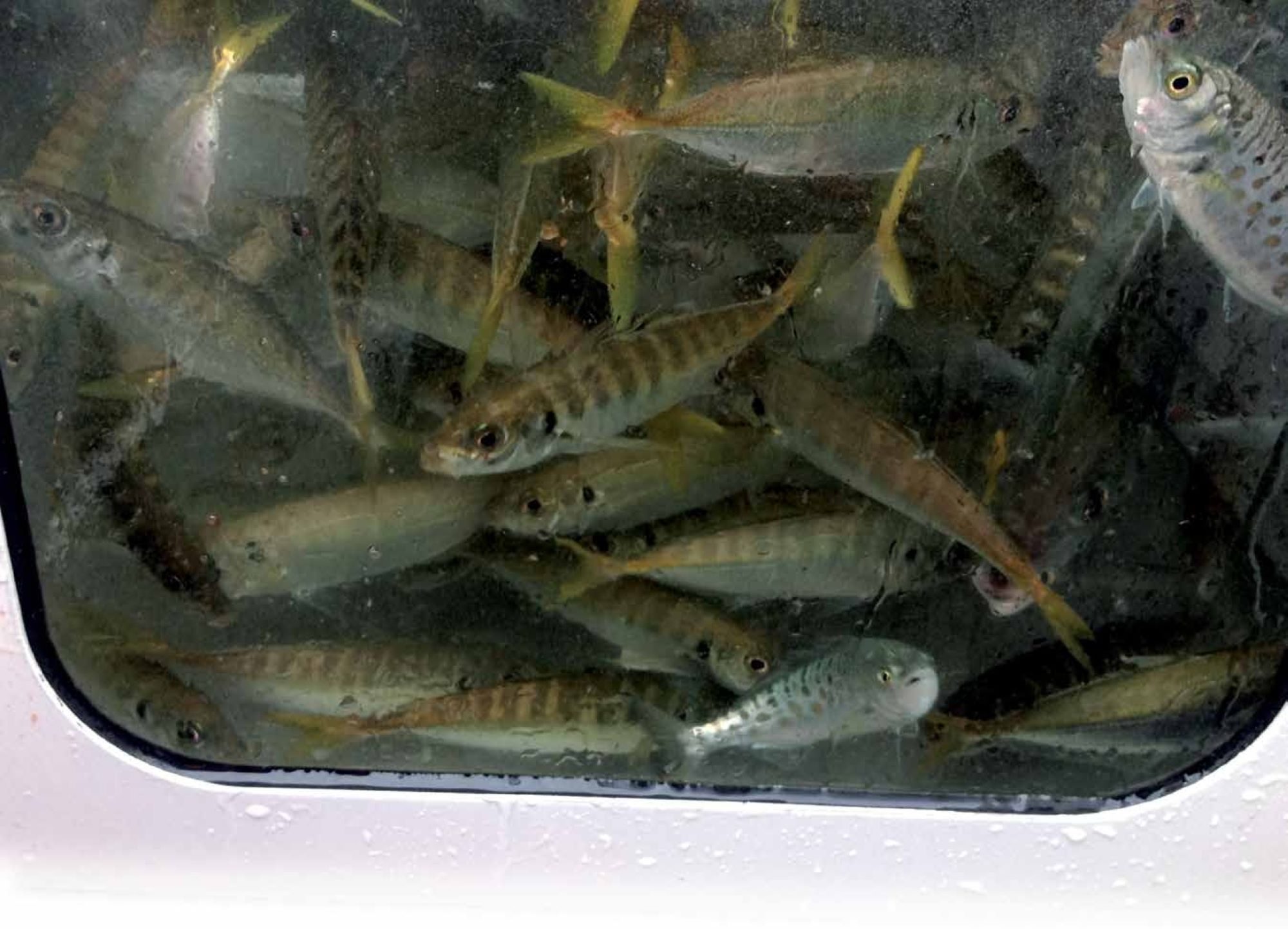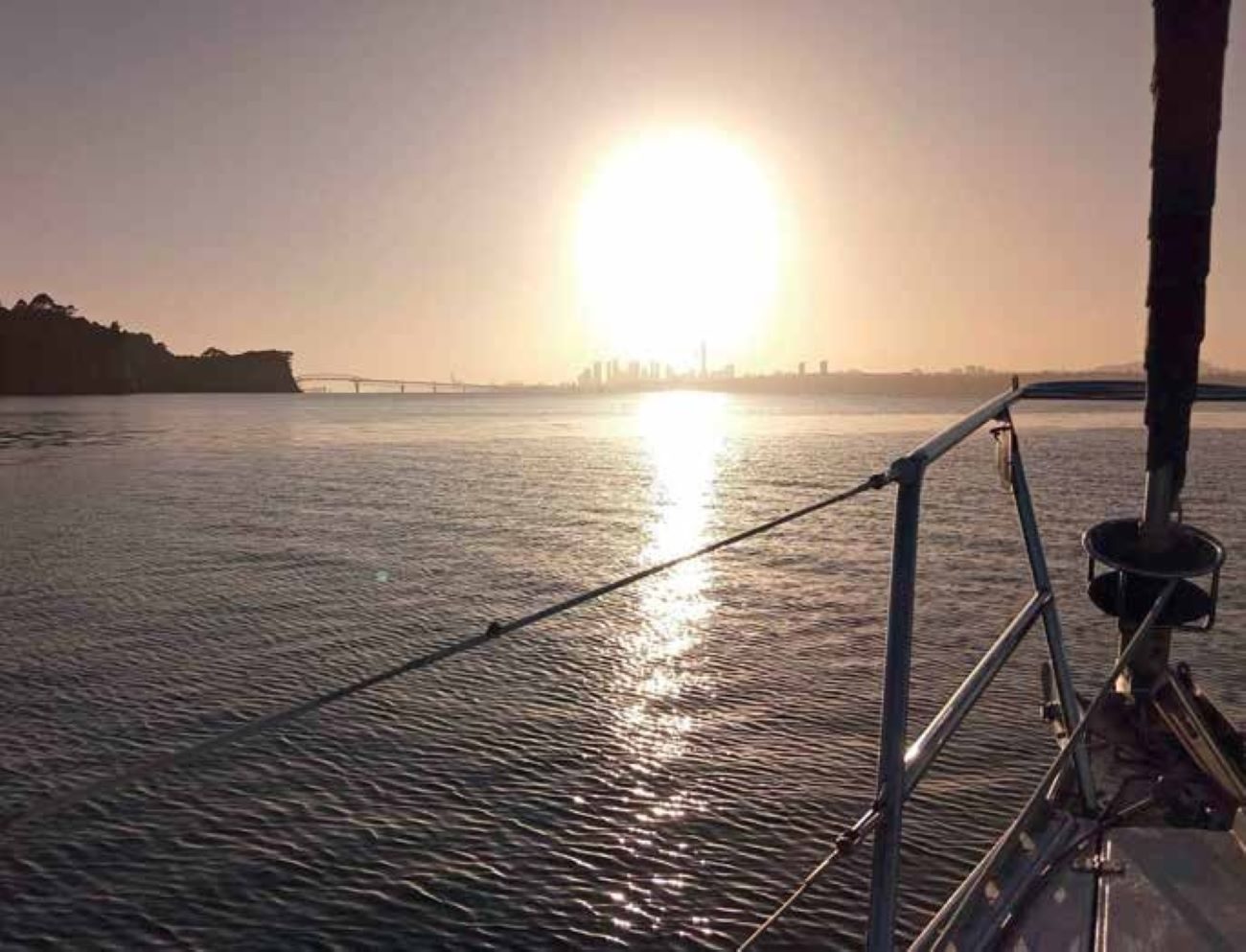

Dragging a reliable, suitably-sized drogue slows the boat’s drift, making lure presentation easier and much more effective. A drogue can also offer advantages when fishing at anchor.
It’s simple: if the boat’s moving too quickly, getting lures and baits to reach and stay on the bottom can be challenging.
A fast drift speed also makes it difficult for many fish to catch and grab your offering. Time to get out the drogue!
Too much wind is the usual culprit. Exactly how much wind is too much varies according to the shape/weight of the boat.
For example, a reasonably small, light tinny with an open cabin tends to catch the wind like a sail, so needs very little wind to be shunted along, whereas a large, heavy fibreglass boat will withstand much more breeze before this becomes problematic. As a generalisation most boats can handle around 10-15 knots before requiring a drogue to slow them down.

DROGUE BASICS & FEATURES
Ocean-trotting yachties will no doubt be familiar with a sea anchor, which keeps the vessel pointing into the wind and swell when deployed from the bow, enabling those on board to get some rest at night.
Drogues assume similar duties when used by recreational anglers, although it’s more about slowing the drift speed than making the drift more comfortable or safe.
A wide, parachute-style suits these purposes. However, as this shape places quite a bit of strain on the bollard, the rope and the drogue itself, it’s important to get the right size for your boat and to accept that there are physical limitations.
Using a drogue that’s too small or in conditions that are too rough will see even the best quality products blown apart. That’s why many brands provide a rough guide as to what size craft are suitable for their drogues.
Two ropes are usually incorporated. The main rope must be strong enough to hold the boat in fresh winds and be long enough to be deployed from a location that suits your needs best (more about this shortly).
The other rope is the ‘collapse cord’. It is attached to the tip of the drogue so when the time comes for it to be retrieved, this cord releases the trapped water and makes the retrieval process very easy.
Most drogues have a hole in the middle: this keeps the drogue in place rather than yawing from side to side. Some also have a float attached to one of the parachute cords to prevent the drogue from spinning.
Some drogues, especially the bigger ones, also have a shock absorber or heavy-duty bungee incorporated within their main rope to help protect them from sudden impacts.
These devices vary greatly. They can take the form of a slim fender tied at one end a few metres from the drogue, creating a dog-leg effect that straightens under pressure, or it might be a powerful bungee that stretches to take the worst of any powerful waves slapping the vessel.
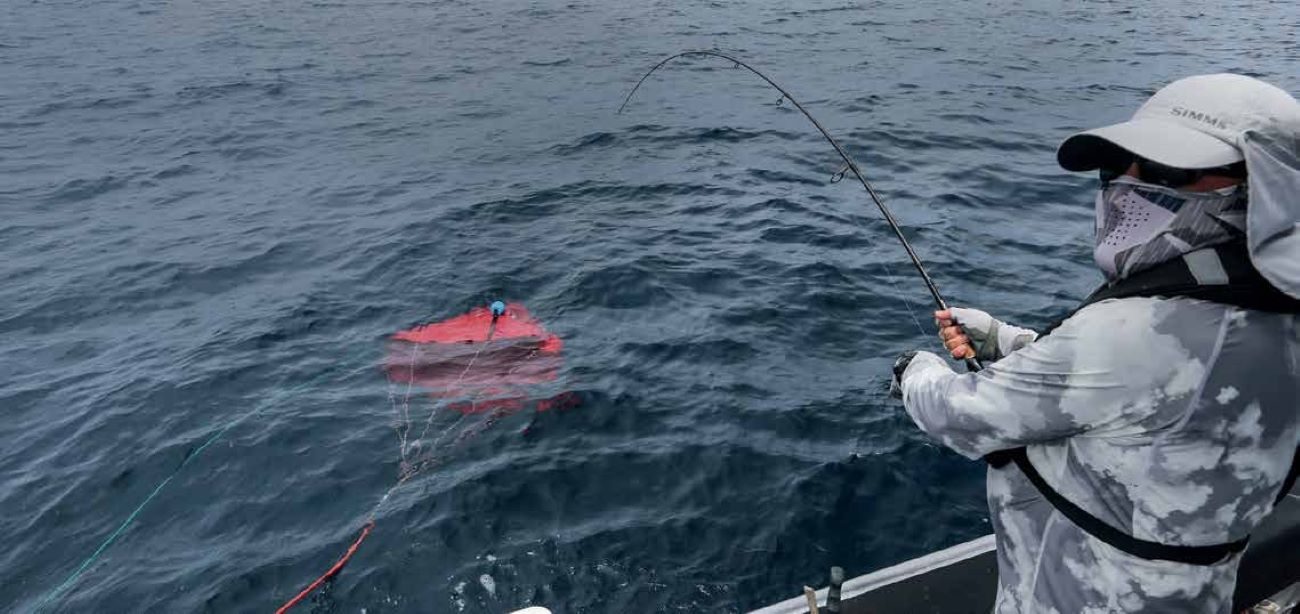
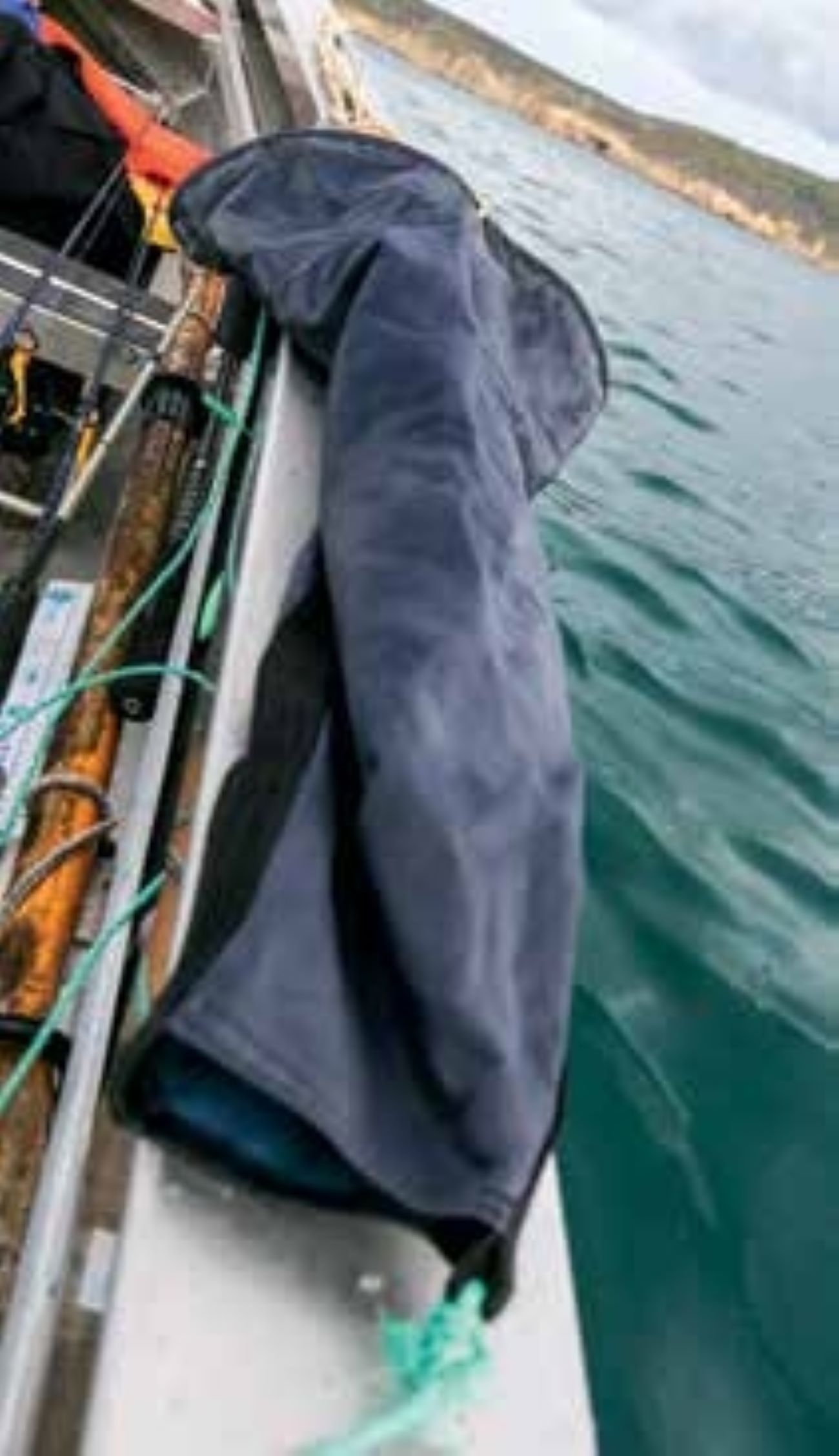
DEPLOYING THE DROGUE
Exactly how and where the drogue is attached tends to be determined by the size of the vessel and the type of fishing involved.
For small vessels under 6m I recommend attaching the drogue to the bow, as this ensures the boat meets the swells headfirst, making swamping much less likely. However, as this can lead to an ‘out of sight, out of mind’ situation, I tie mine off reasonably short – just far enough out for it to be submerged and biting into undisturbed water.
This position keeps it out the way so my companion and I can soft-bait and stick-bait reasonably freely. Even better, if I’m distracted and head off with the drogue still out, the rope isn’t long enough for it to end up around the prop or cut off (speaking from experience!).
Bigger boats can have the drogue attached from a stern quarter or yoke-style amidships, depending on how the boat drifts best and how many anglers are on board. This keeps it handy for quick deployment and retrieval.
Personally though, if the wind and tide are favourable, I usually attach the drogue to the bow whatever the boat size. This tends to keep the drogue out of the way during the lurefishing process, as well as more easily avoidable when fighting big fish such as kingfish.
And no worries if access is limited or impossible through to the bow area. Simply attach the main rope from the bow bollard before heading out, and have the collapse cord and drogue stowed back in the cockpit where it can be easily reached and used without the need to go for’ard each time.
In all cases though, it pays to have a skipper who understands which way the drogue will best open, and to have someone experienced throwing the drogue out.
Usually the breeze will dictate how the boat should be positioned so when the drogue is thrown out it will fill and puff open. This basically means heading up into the breeze, stopping, having the drogue carefully thrown out, then reversing for a short distance to help the drogue fully inflate.
As for the drogue ‘chucker’ – they need to try and ensure that the two ropes are not tangled around each other or the chute, and that the parachute ends up facing the right way in the water so it can fill up.
It’s especially important to check that the ‘collapse’ cord remains longer than the main one when the chute is deployed, or it will allow the water to spill out and prevent the parachute from opening fully.
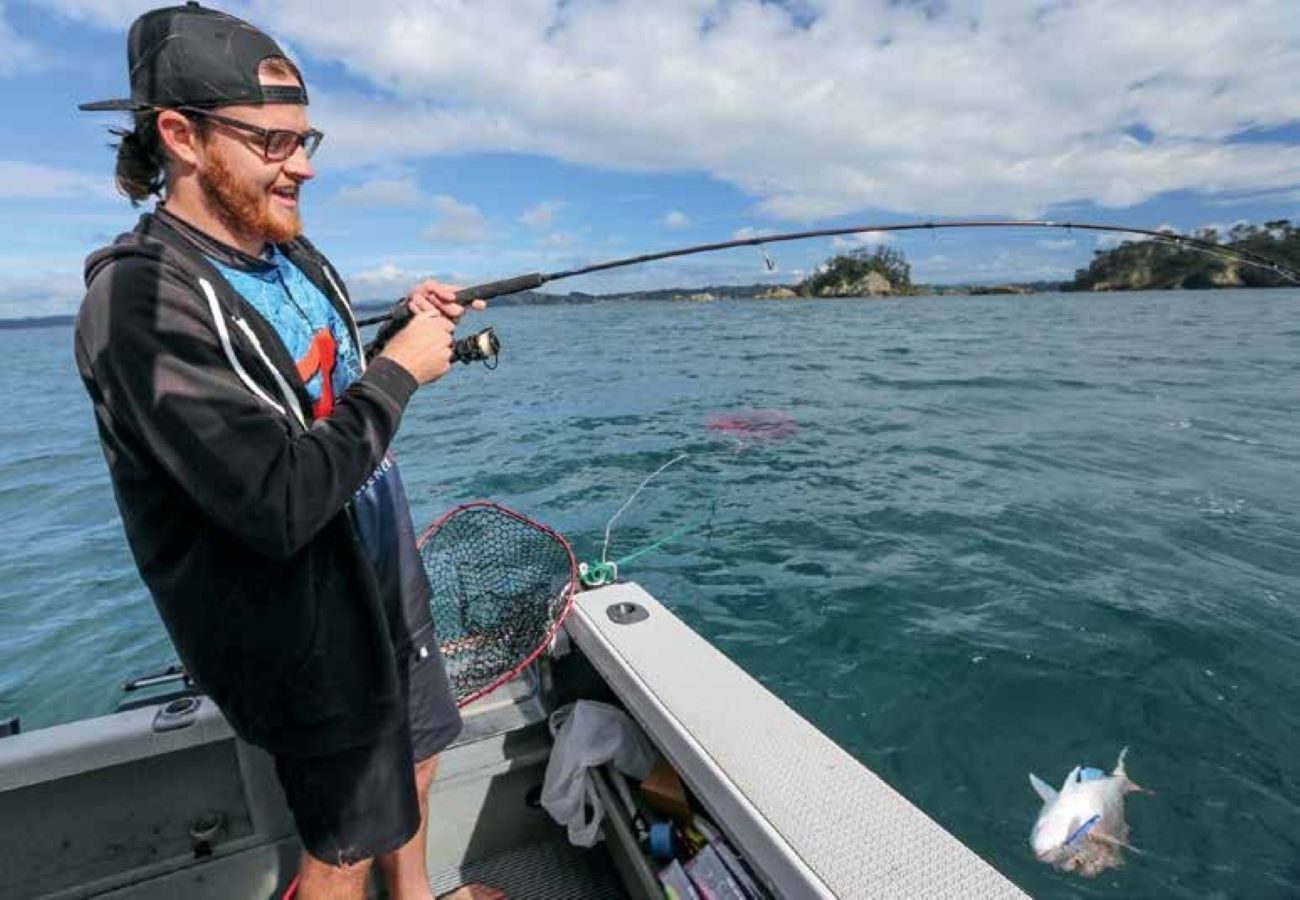
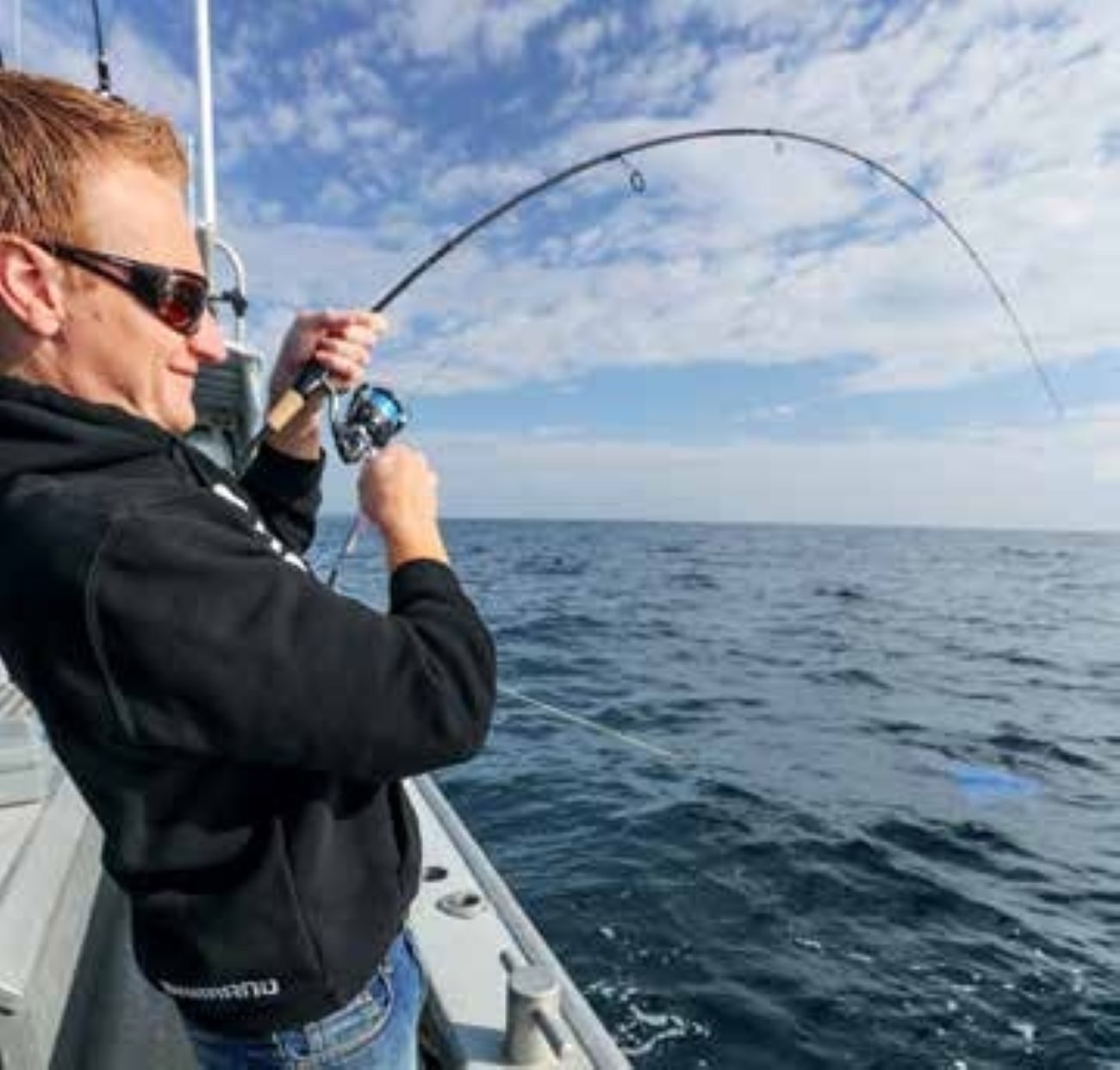
OTHER DROGUE TRICKS
Wind and sea currents vary massively in relative speed and direction; sometimes they work together in the same direction, at other times they conflict. Thinking anglers can sometimes harness one or the other (whichever is the stronger) with a drogue to ensure a more favourable direction takes place.
Opposing wind and tidal flow directions can sometimes be handy; these opposing forces tend to cause the boat to be ‘spat’ sideways, so if there’s an area nearby that suits that drift direction, it’s possible to take advantage of this.
Depending on where the drogue’s attached and which way the rudder/outboard has been turned, the drogue can hold the drifting boat in a steady position that enables effective soft-bait casting or the deployment of bait and jigs.
A drogue can help anchored bait and berley practitioners, too. Traditionally a wind-against-tide situation signalled the end of stray-lining, as the anglers’ lines and berley head back under the boat and along the anchor rope making fishing impossible.
However, if fishing in a reasonable tidal flow, simply attach a drogue to the stern quarter so it catches the current and then holds the boat in position, enabling fishing to continue! BNZ



